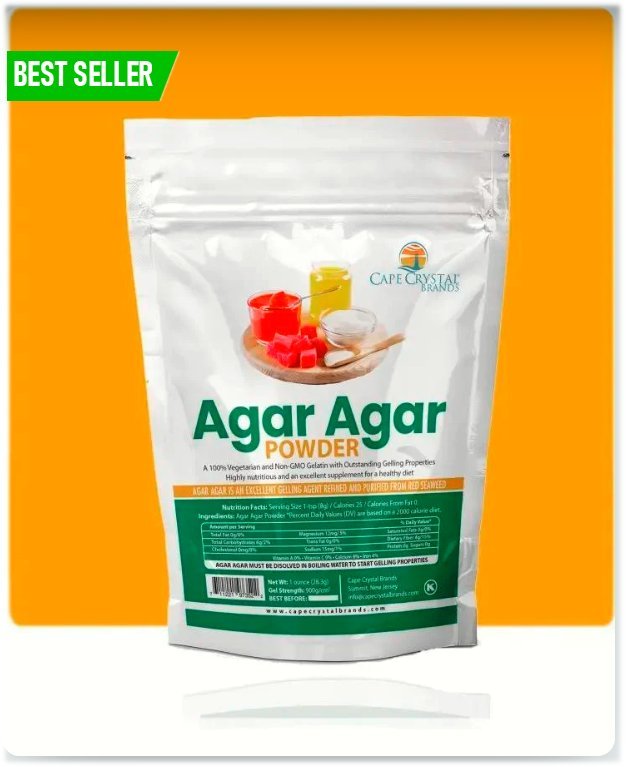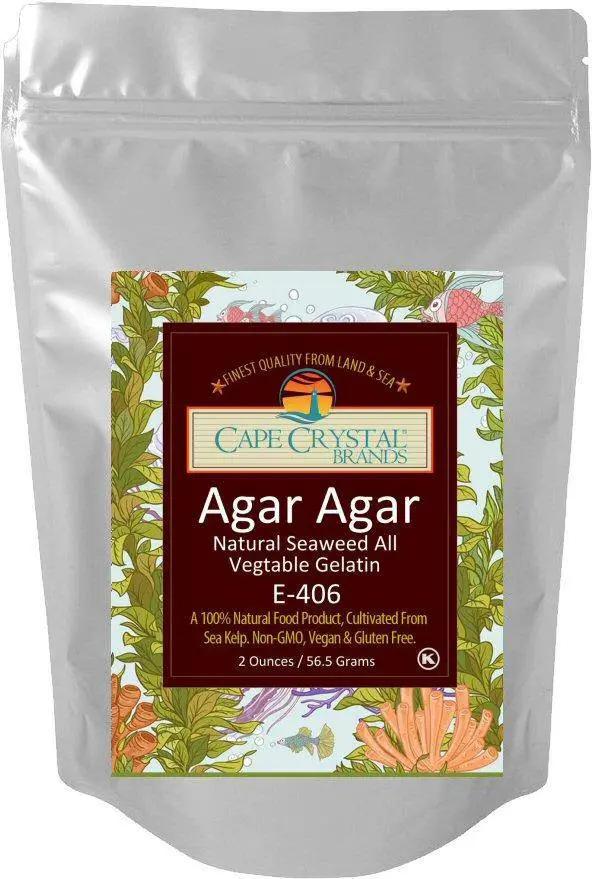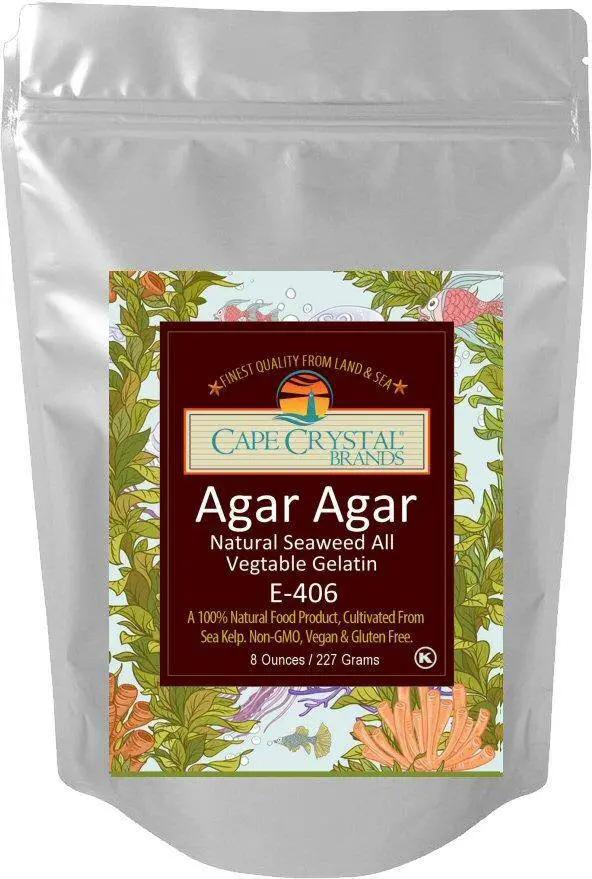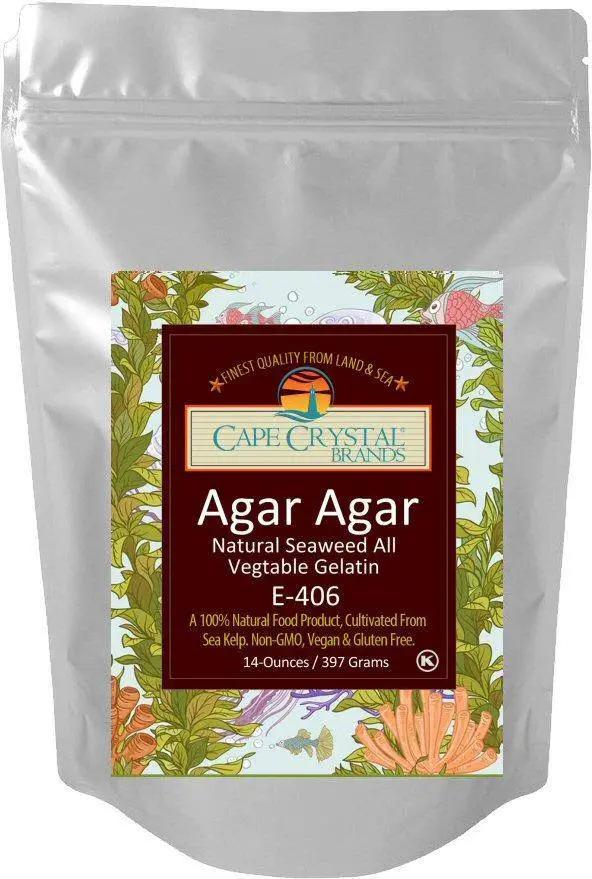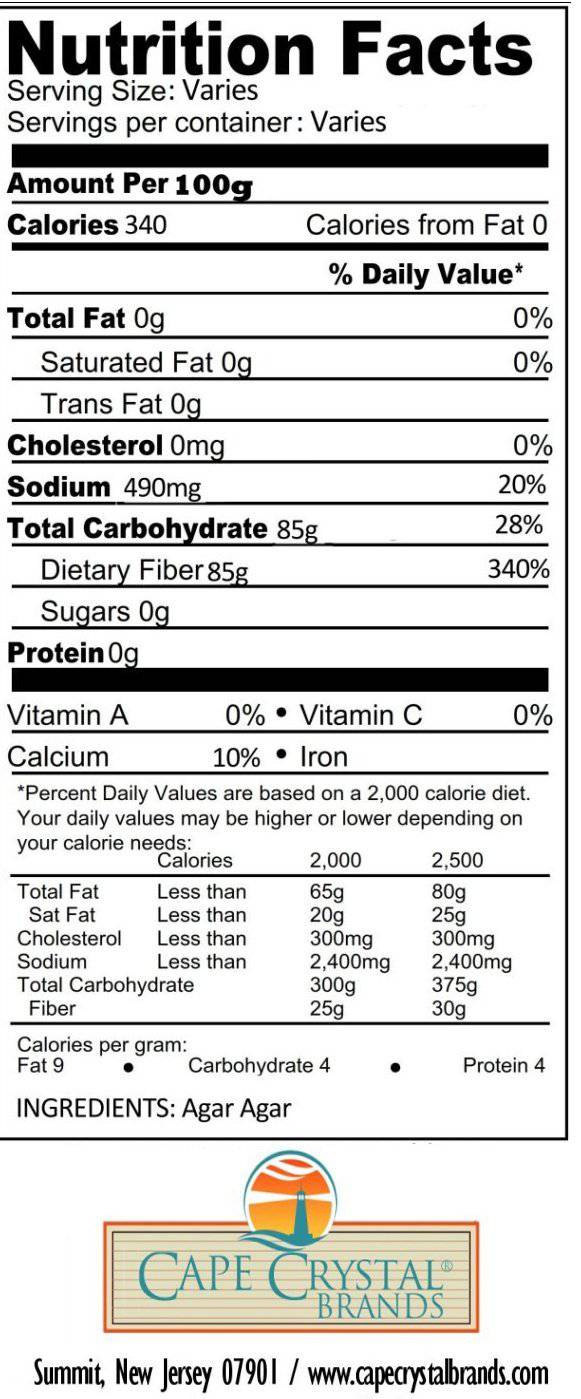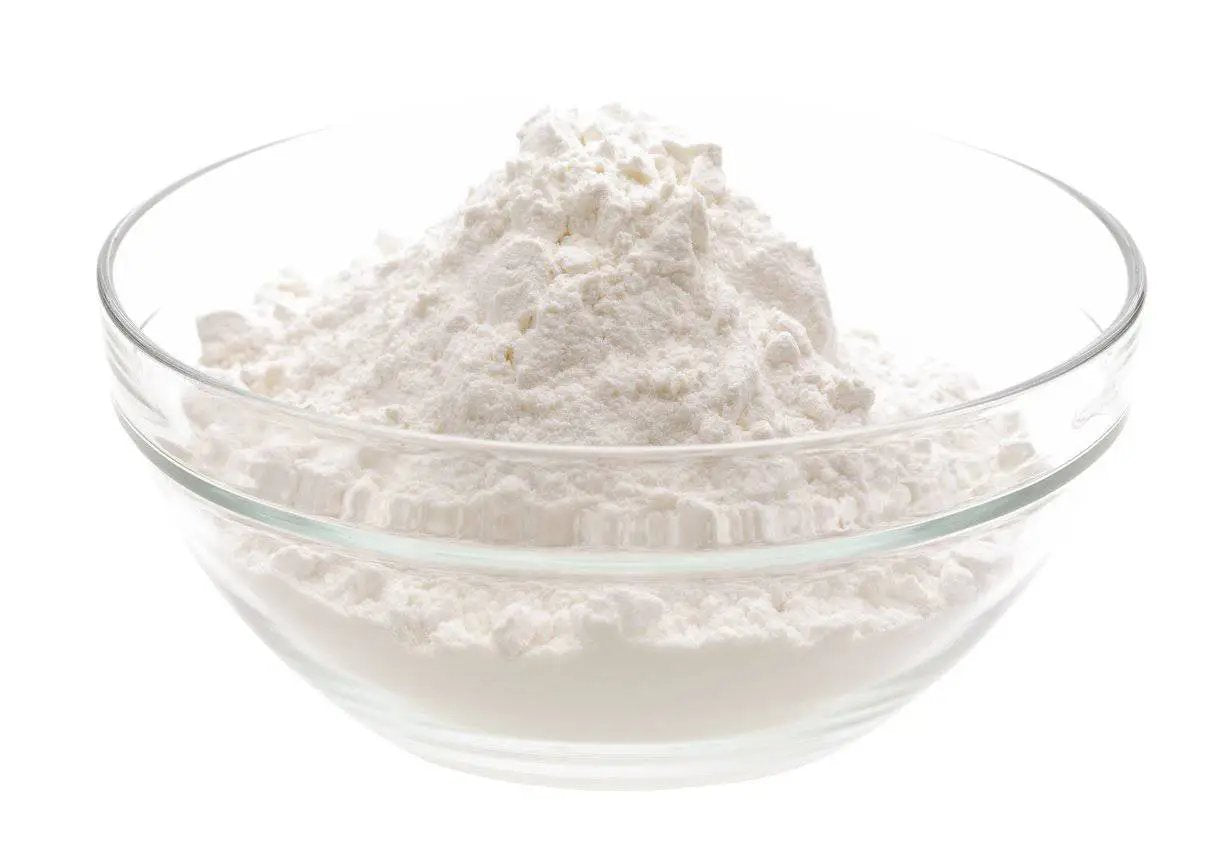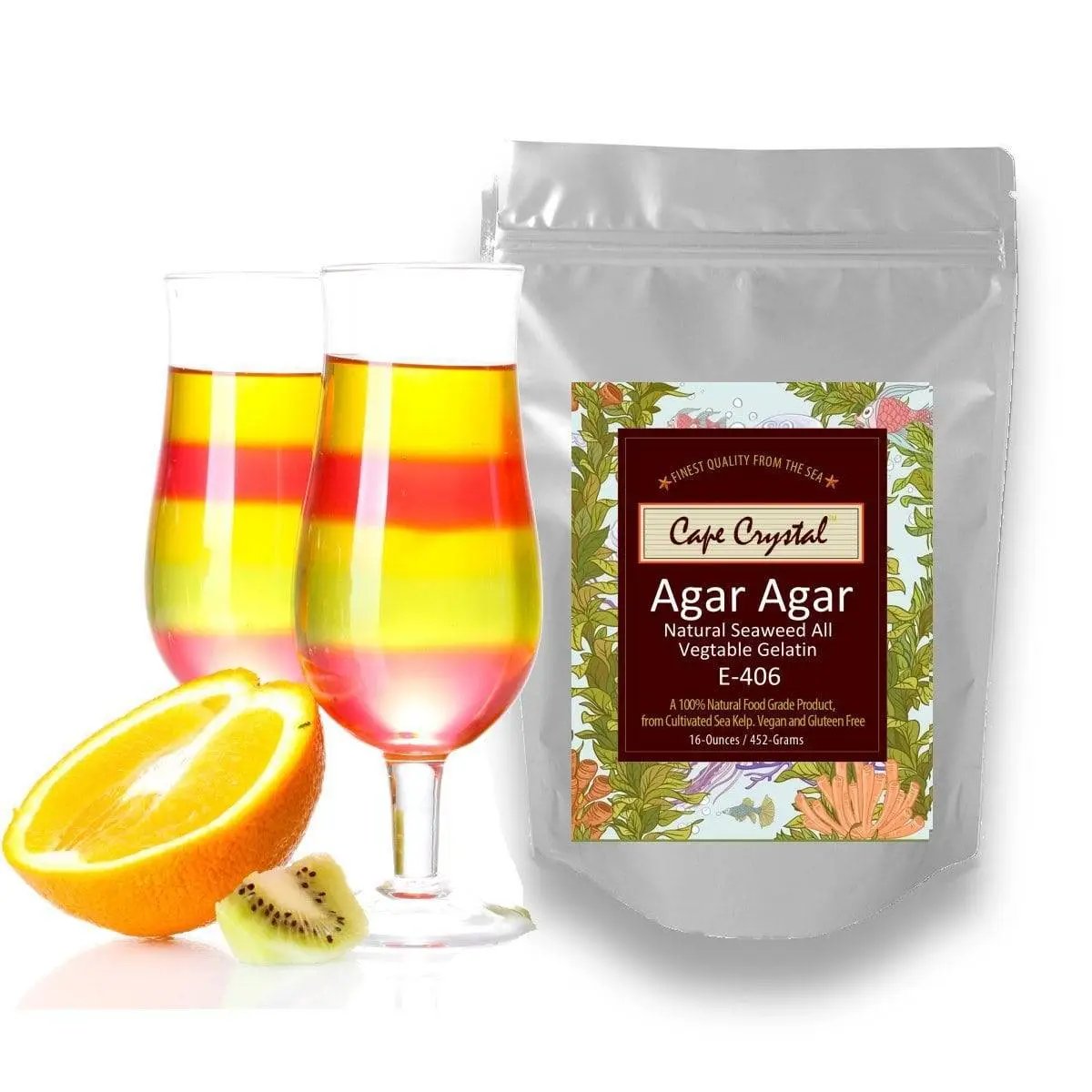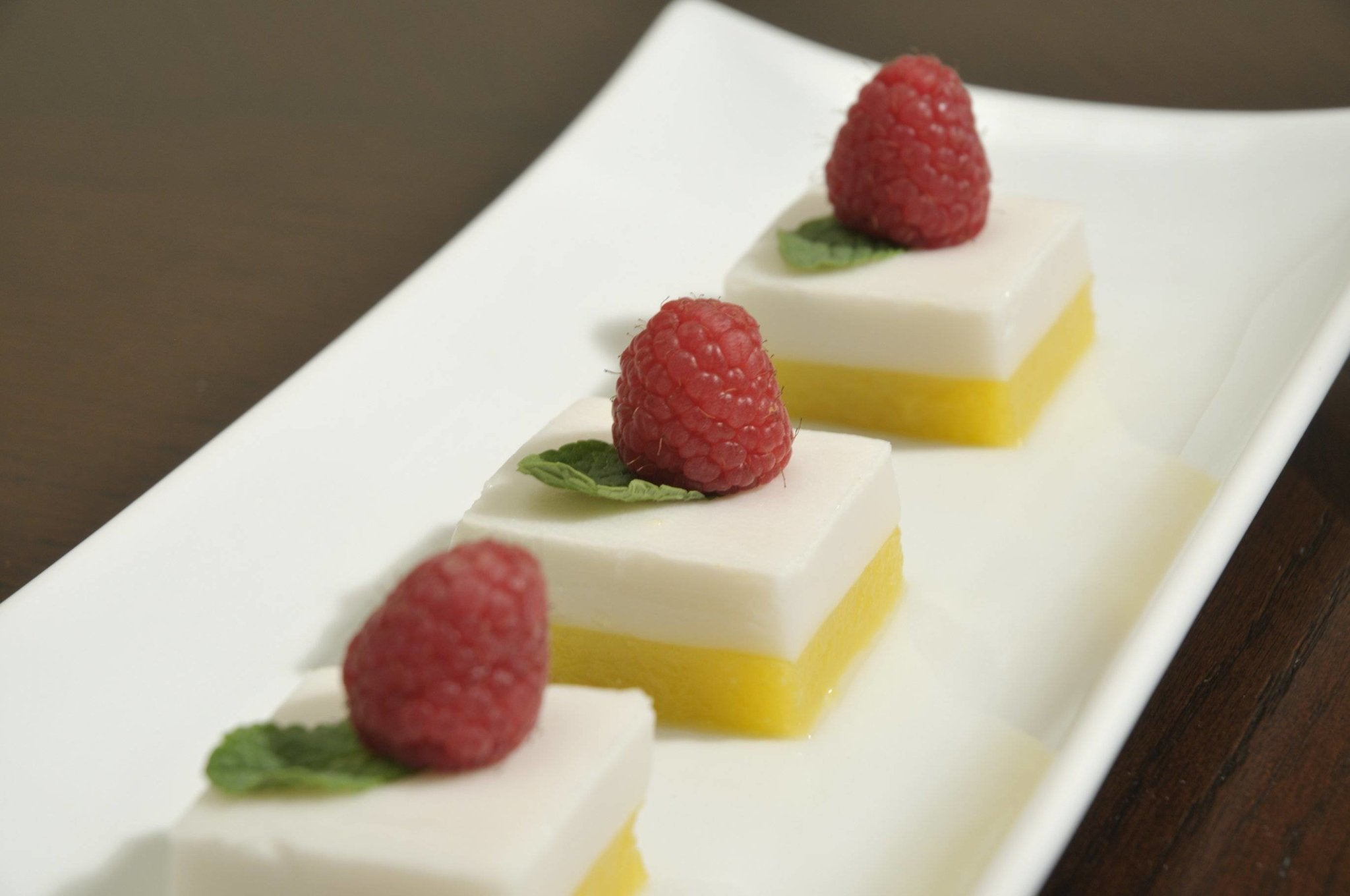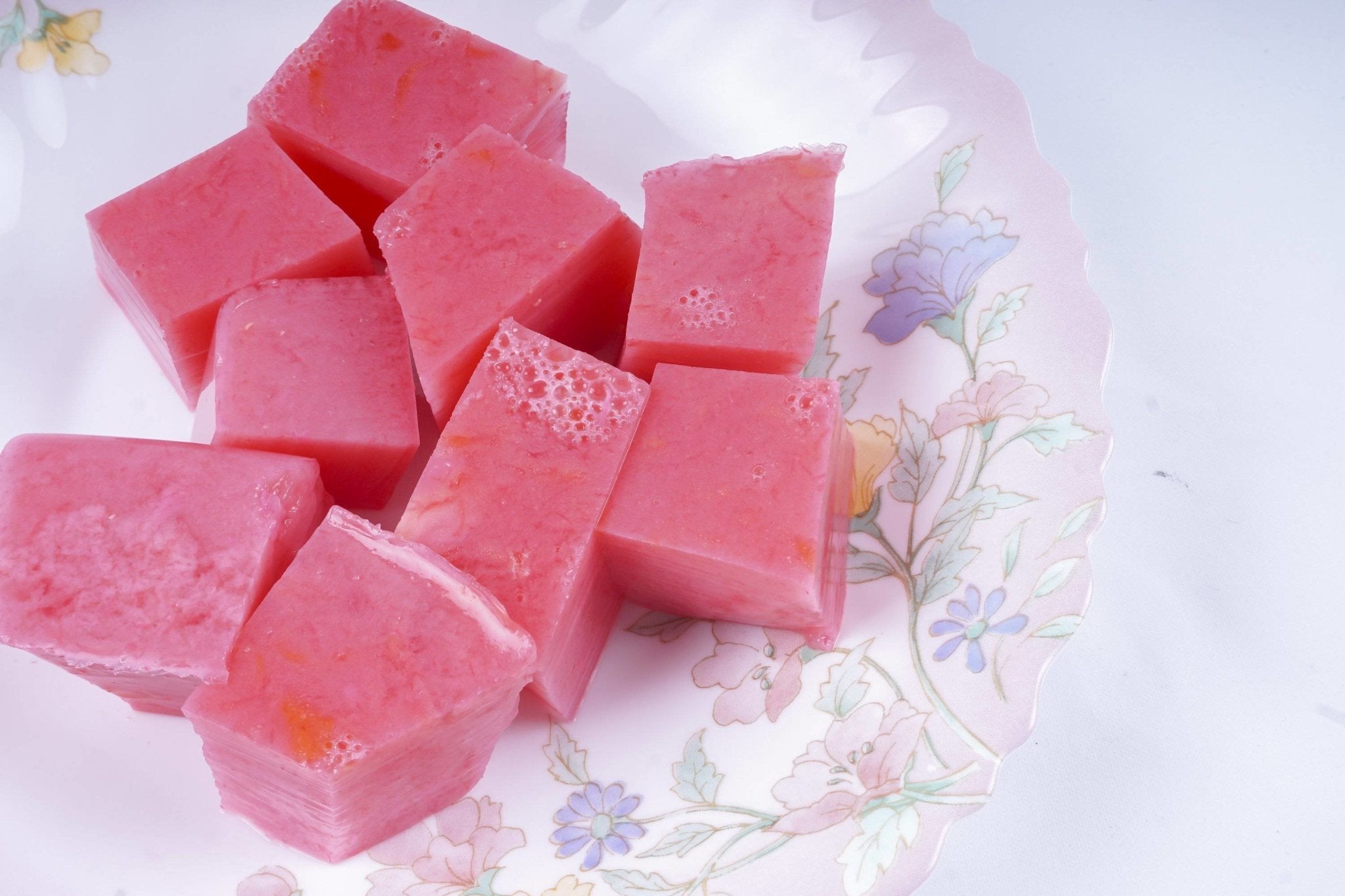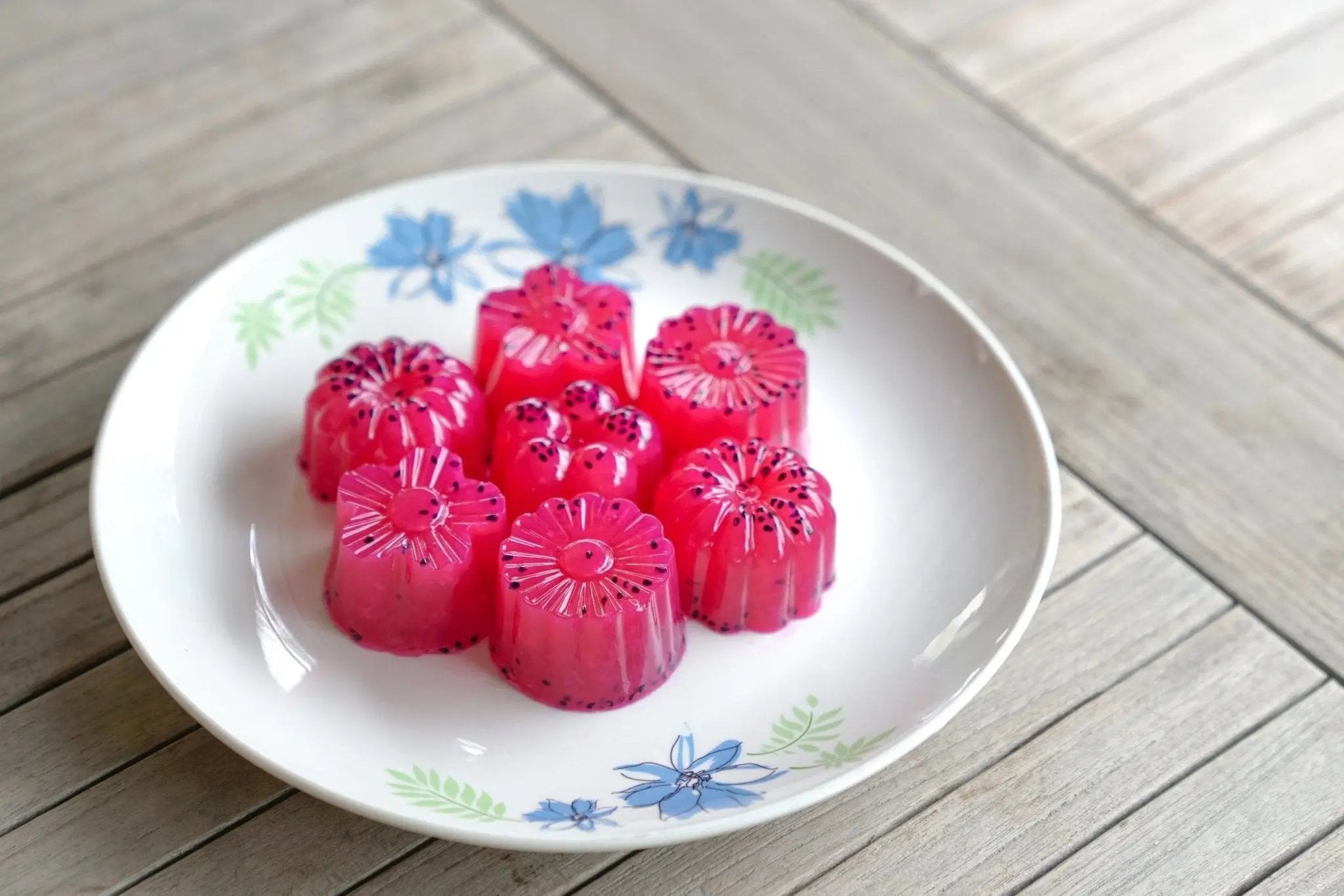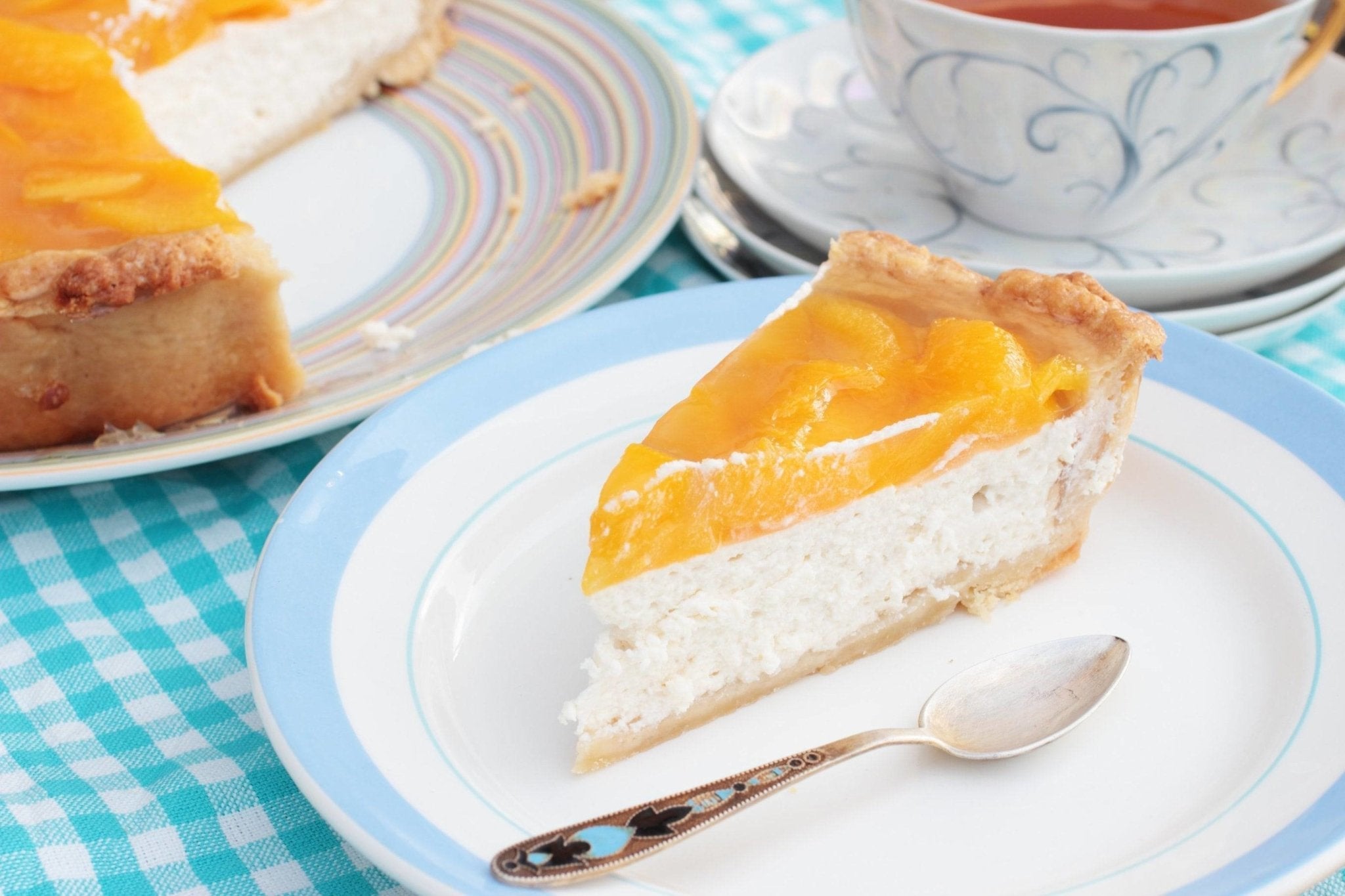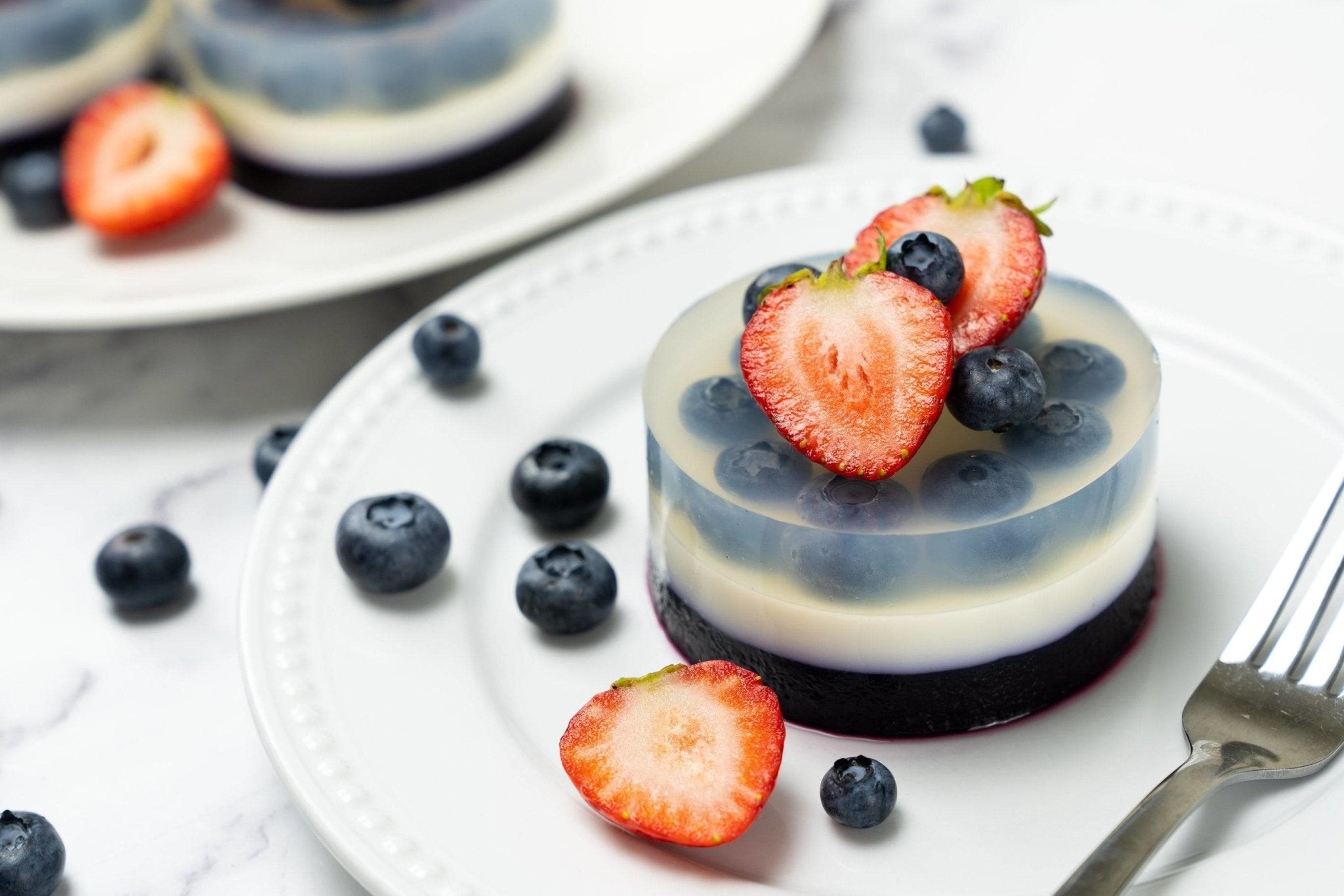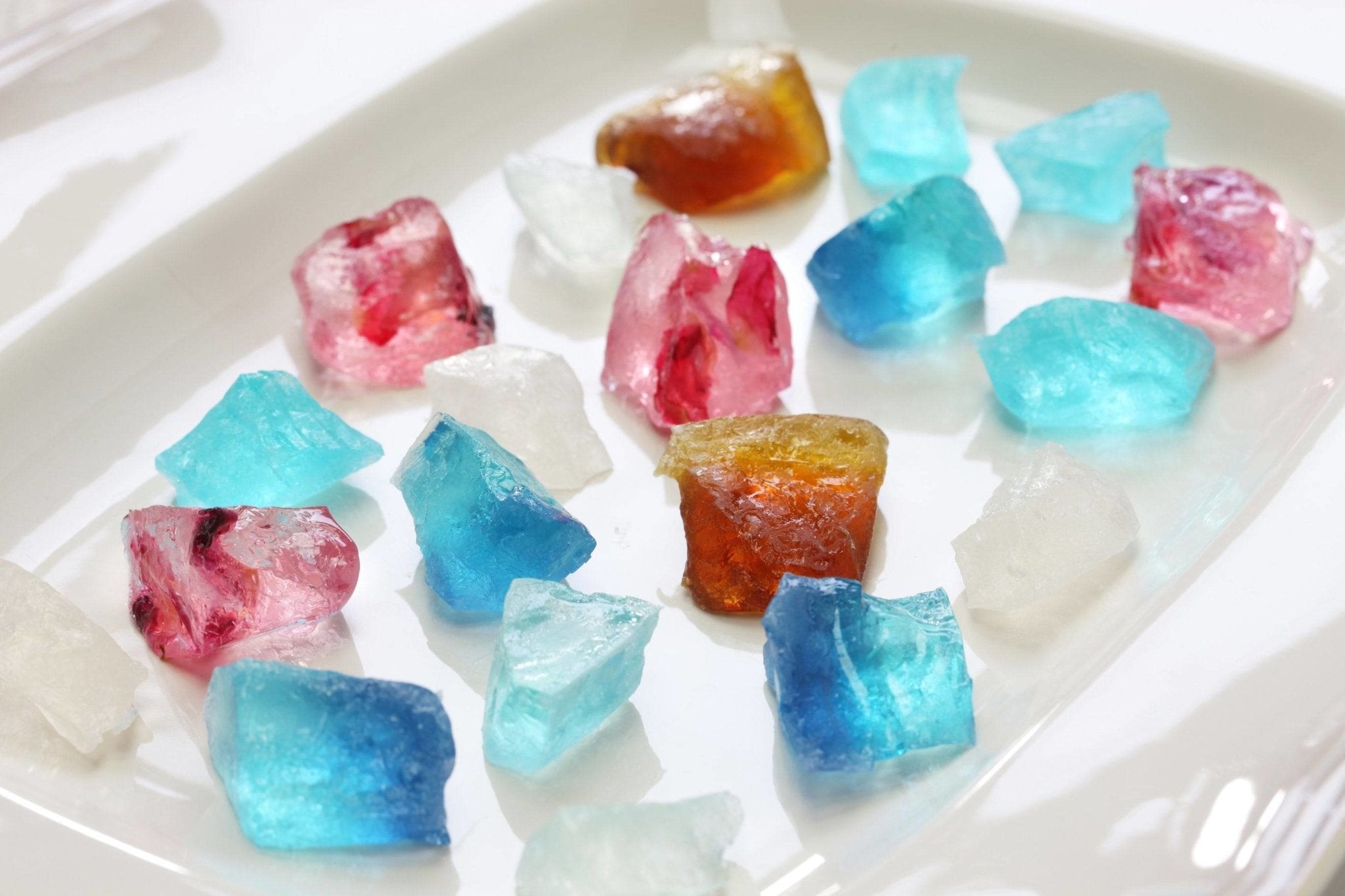
Best Online Platforms for Hydrocolloid-Based Recipes & Cooking Tips
SUBSCRIBE TO OUR BLOG
Promotions, new products, and recipes.
Want to master hydrocolloid-based cooking but don’t know where to start? Online platforms provide a wealth of recipes, tutorials, and expert advice on using ingredients like agar, xanthan gum, and carrageenan. In this guide, we’ll explore the top communities and websites where you can find the best hydrocolloid-based recipes and learn from experienced chefs!
Aspiring cooks and professional chefs alike are always on the lookout for new and innovative ways to elevate their culinary creations. Hydrocolloid-based recipes have emerged as a game-changing trend in cooking, offering unique textures, flavors, and presentations. Hydrocolloids are hydrophilic substances that form gels when mixed with water, making them versatile ingredients for creating everything from foams to jellies.
With the rise of hydrocolloid-based cooking, it's no surprise that online communities and platforms dedicated to sharing recipes and tips related to hydrocolloids have emerged. These online resources offer a wealth of information, ranging from basic hydrocolloid recipes to more advanced molecular gastronomy techniques. Whether you're a beginner or an experienced chef, there's something for everyone in the world of hydrocolloid-based cooking.
Key Takeaways
- Hydrocolloid-based recipes offer unique textures and flavors that can elevate culinary creations.
- Hydrocolloids are hydrophilic substances that form gels when mixed with water, making them versatile ingredients in cooking.
- Online communities and platforms offer a wealth of information and resources for those interested in hydrocolloid-based cooking.
- Whether you're a beginner or an experienced chef, there's something for everyone in the world of hydrocolloid-based cooking.
- Stay tuned for more information on hydrocolloids and their role in cooking!
Understanding Hydrocolloids: A Food Science Perspective
Hydrocolloids play a crucial role in the food industry, with applications ranging from food stabilization to flavor encapsulation. Understanding the science behind hydrocolloids is essential for utilizing them effectively in cooking and achieving desired textures and flavors.
What are Food Hydrocolloids?
Hydrocolloids are a group of long-chain polymers that have the ability to form gels or thicken solutions by interacting with water molecules. They are commonly used in the food industry as stabilizers, emulsifiers, thickeners, and gelling agents.
Hydrocolloids can be derived from various sources, including plant, animal, and microbial. Some common hydrocolloids used in food include:
| Hydrocolloid | Source | Function |
|---|---|---|
| Agar | Seaweed | Gelling agent |
| Xanthan gum | Bacteria fermentation | Thickening agent, stabilizer |
| Carrageenan | Seaweed | Thickening agent, stabilizer |
| Guar gum | Legumes | Thickening agent, stabilizer |
Use our Hydrocolloid Calculator to get perfect gel ratios every time.
Hydrocolloid Cooking Techniques
Cooking with hydrocolloids requires an understanding of their unique properties and functions. Depending on the desired outcome, different hydrocolloids can be combined and used in various ratios to achieve specific textures and flavors.
Hydrocolloids can be incorporated in several ways, including:
- Dry mixing with other dry ingredients
- Mixing with water or other liquids
- Hydrating in water or other liquids before use
- Blending with other ingredients to form a paste or slurry
Hydrocolloid Gelling Agents
Hydrocolloids have the unique ability to form gels when hydrated in water or other liquids. The gel formation process involves the entanglement of hydrocolloid molecules, which leads to the formation of a network that traps liquid and creates a semi-solid structure.
Some commonly used hydrocolloid gelling agents include:
- Agar
- Carrageenan
- Gellan gum
- Alginate
Hydrocolloid Thickening Agents
Hydrocolloids are often used as thickening agents to increase the viscosity of liquids and create a desired texture in foods. The thickening ability of hydrocolloids is due to their ability to absorb and hold water, forming a gel-like substance that thickens the liquid.
Some commonly used hydrocolloid thickening agents include:
- Xanthan gum
- Guar gum
- Locust bean gum
- Cellulose gum
"Hydrocolloids are truly fascinating ingredients that can transform the texture and flavor of foods. Understanding their unique properties and functions is essential for utilizing them effectively in cooking and achieving desired outcomes."
Exploring the World of Hydrocolloid Recipes
Hydrocolloid-based recipes are becoming increasingly popular in the culinary world. With their unique properties and versatility, hydrocolloids can enhance the texture, flavor, and appearance of dishes in remarkable ways. Here, we showcase a variety of hydrocolloid-based recipes, ranging from simple and easy to more innovative and experimental ones.
Easy Hydrocolloid Recipes
If you're new to cooking with hydrocolloids, it's best to start with easy recipes that require minimal ingredients and preparation. Here are some ideas:
- Hydrocolloid Fruit Puree: Combine 500g of your favorite fruit with 2g of xanthan gum and blend until smooth. Serve as a refreshing dessert or topping for pancakes and waffles.
- Hydrocolloid Cheese Sauce: Melt 2 tablespoons of butter in a saucepan and whisk in 2 tablespoons of flour. Gradually add 1 cup of milk while whisking until smooth. Add 1 teaspoon of sodium citrate and 1 cup of grated cheese. Stir until smooth and creamy. Use as a dip or sauce for pasta dishes.
- Hydrocolloid Ice Cream: Combine 2 cups of heavy cream, 1 cup of whole milk, ¾ cup of sugar, and 2g of guar gum in a saucepan. Heat the mixture until it begins to steam, but not boil. Remove from heat, add flavorings of your choice, and allow the mixture to cool. Transfer the mixture to an ice cream maker and churn according to the manufacturer's instructions.
Innovative Hydrocolloid Recipes
If you're looking to experiment with hydrocolloids and take your culinary skills to the next level, here are some innovative recipes to try:
| Recipe | Description |
|---|---|
| Hydrocolloid Caviar | Create edible "caviar" using reverse spherification techniques with sodium alginate and calcium chloride. Add them to your favorite dishes for a fun and unique burst of flavor. |
| Hydrocolloid Foam | Use soy lecithin and a hand blender to create a light and airy foam to top off desserts or drinks. |
| Hydrocolloid Noodles | Make noodles from hydrocolloid ingredients like konjac flour or xanthan gum. Serve with your favorite sauce or broth. |
Hydrocolloid Culinary Experiments
For those who love to push the boundaries of cooking, here are some hydrocolloid culinary experiments to try:
- Hydrocolloid Caramel: Use hydrocolloids to create a chewy and stretchy caramel that's perfect for topping desserts or snacking on.
- Hydrocolloid Powder: Mix hydrocolloids with other ingredients and dehydrate them to create a powder that can be used to add flavor and texture to dishes.
- Hydrocolloid Infused Liquor: Use hydrocolloids to infuse flavors into liquor and create unique cocktails and drinks.
With these hydrocolloid-based recipe ideas, you can explore the endless possibilities of cooking with hydrocolloids and create dishes that are both delicious and visually impressive. So go ahead and experiment with different hydrocolloid ingredients and techniques, and discover your own innovative culinary creations!
Tips and Tricks for Using Hydrocolloids in Your Recipes
Hydrocolloid-based recipes are becoming more popular among home cooks and professional chefs alike. These recipes use hydrocolloid ingredients to create unique textures and flavors in dishes. However, cooking with hydrocolloids can be tricky, as they require specific techniques and measurements to achieve the desired results. Here are some tips and tricks for using hydrocolloids effectively in your recipes:
Measurements Matter
When using hydrocolloids, accuracy is essential. It is crucial to measure the ingredients correctly to achieve the desired texture and consistency in the final dish. Using a digital kitchen scale is recommended for precise measurements. For example, if you're using xanthan gum as a thickener, start with 0.1% of the weight of the liquid you're trying to thicken and adjust from there based on desired thickness.
Temperature Control
Hydrocolloids are temperature-sensitive, meaning that their properties change depending on the temperature. For example, agar-agar, a common gelling agent, needs to be heated to a specific temperature (usually 85 °C or 185 °F) to activate its gelling properties. Once it has cooled down, the gel will set. Pay attention to the temperature requirements when working with hydrocolloids to achieve optimal results.
Hydration Matters
Hydrocolloids need hydration to work effectively. When using hydrocolloids as a thickening agent, they need to be hydrated in cold liquid before adding them to the hot mixture. This helps to prevent clumping. Gelling agents will also require proper hydration when being bloomed before they are added to a hot mixture.
Texture is Key
Hydrocolloids are often used to create unique textures in dishes. However, achieving the desired texture can be challenging. For example, if you are using hydrocolloids to create a creamy texture, you need to ensure that you use the right amount of thickening agents. Too much can result in a gummy texture, while too little can result in a watery consistency.
Start Small and Experiment
Cooking with hydrocolloids can be experimental and exciting. However, it is best to start with small recipes and experiment to find what works best for you. As with any new ingredient, it takes time and practice to get the hang of using hydrocolloids effectively in your recipes.
Where to Find Hydrocolloid Recipes Online
Looking for inspiration for your next hydrocolloid-based recipe? Fortunately, there are plenty of online resources available to help you discover new and innovative dishes. Here are some of the best places to find hydrocolloid recipes:
| Website | Description |
|---|---|
| All Things Hydrocolloid | A blog dedicated to hydrocolloid cooking with a wealth of recipes and tutorials. |
| Cape Crystal Brands | An online store that sells hydrocolloid ingredients and offers recipes and tips for using them. |
| Molecular Recipes | A website with a vast collection of molecular gastronomy recipes and techniques. |
| Amazing Food Made Easy | A resource for sous vide and modernist cooking, with many hydrocolloid-based recipes. |
In addition to these websites, social media platforms such as Instagram and Pinterest can also be great sources of hydrocolloid recipes. Simply search for relevant hashtags such as #hydrocolloidrecipes or #moleculargastronomy to discover new recipes and tips.
If you're interested in connecting with like-minded individuals who share your passion for hydrocolloid-based recipes, consider joining online communities such as Reddit's r/MolecularGastronomy or Facebook groups like Sous Vide and Modernist Cooking.
With these resources at your fingertips, you'll never run out of ideas for delicious and innovative hydrocolloid recipes.
Joining Hydrocolloid-Focused Communities
Joining online communities dedicated to hydrocolloid-based recipes is an excellent way to connect with like-minded individuals and share knowledge and experiences. These communities offer a platform for anyone interested in hydrocolloids to come together and discuss their culinary experiments and challenges.
There are several online communities that cater to hydrocolloid-based recipes, ranging from forums to social media groups. For example, the Hydrocolloids Recipe Collection on Facebook is a group that allows members to share their hydrocolloid recipes and connect with fellow hydrocolloid enthusiasts.
Another popular community is the Modernist Cuisine Forum, which is a platform for individuals interested in modernist cooking techniques, including hydrocolloid-based recipes. This forum offers a space for members to share their culinary experiments and ask for advice from other experienced cooks.
Virtual events and workshops are also available for those interested in learning more about hydrocolloid-based recipes and techniques. For example, the International Association of Culinary Professionals often hosts webinars and workshops that focus on modernist cooking techniques, including the use of hydrocolloids in recipes.
Joining hydrocolloid-focused communities can not only broaden your knowledge and skills in cooking with hydrocolloids but also provide an opportunity to connect with others who share your passion for culinary experimentation.
Enhancing Culinary Skills with Hydrocolloids
Integrating hydrocolloids into cooking can open doors to a whole new world of culinary possibilities. Not only do hydrocolloids offer innovative ways to achieve textures and flavors, but they also improve the skills of aspiring culinarians.
The intricate chemistry behind hydrocolloids allows cooks to experiment with different cooking techniques, leading to the creation of innovative recipes that push the limits of traditional cooking.
Hydrocolloid cooking techniques data-mce-fragment="1"> like spherification, gelification, and emulsification require precise measurements and controlled temperatures, promoting a more systematic approach to cooking while providing a deeper understanding of ingredients and their properties.
Through hydrocolloid-based recipes, cooks can learn to balance flavors, experiment with new ingredients, and explore new techniques, ultimately expanding their culinary skills and repertoire.
Whether you're a professional chef or an amateur cook, incorporating hydrocolloids into your cooking can help you elevate your culinary expertise and create unique and innovative dishes.
Exploring Hydrocolloid Applications in Different Cuisines
Hydrocolloids are not only used in modernist cuisines but also in traditional dishes from around the world. In many cuisines, hydrocolloid ingredients are used to thicken and stabilize sauces, soups, and stews.
In Asian cuisine, agar-agar, a seaweed-based hydrocolloid, is commonly used to make desserts such as kanten, a jelly-like dessert made with fruit juice and agar-agar. In Japan, kappa carrageenan, derived from red seaweed, is used to make the traditional noodle dish, shirataki noodles.
In Mexican cuisine, xanthan gum is used in salsas and sauces to give them a thick and creamy consistency. In Indian cuisine, gellan gum is used to make low-fat and low-calorie desserts such as kheer.
Hydrocolloid ingredients can be used to add unique textures and enhance flavors in various cuisines, showcasing the versatility and potential of this exciting field of culinary innovation.
Hydrocolloid Gastronomy: A New Culinary Frontier
The use of hydrocolloids in cooking has opened up a new world of culinary experimentation, where chefs can push the boundaries of traditional cuisine and create exciting and innovative dishes. Hydrocolloid gastronomy is a rapidly growing field where chefs use hydrocolloid ingredients and techniques to create unique textures and flavors in their dishes.
One example of hydrocolloid gastronomy is the creation of spherification, a technique that uses sodium alginate and calcium chloride to create spherical liquids that burst in the mouth. This technique is used to create flavored caviar-like spheres that can be used as a garnish or a standalone dish.
Another example is the use of hydrocolloid foams, where ingredients are aerated using a whipped cream dispenser to create light and airy textures. This technique is commonly used to create foam toppings for dishes such as coffee and desserts.
Hydrocolloid gastronomy is an exciting field that is pushing the boundaries of traditional cooking and creating new culinary experiences.
The Science Behind Hydrocolloid Gelling Agents
Hydrocolloid gelling agents play a crucial role in the texture and stability of many edible products. They are widely used in the food industry, from thickening sauces to creating gels and jellies. Understanding the science behind hydrocolloid gelling agents is key to achieving the desired texture and appearance of products made with them.
One of the most significant factors that affect the gel formation of hydrocolloids is the presence of water. Gels formed from hydrocolloid gelling agents are typically hydrophilic, which means they have a strong affinity for water. The gels can trap water in their structures, giving them unique textural properties.
Another important factor is the concentration of hydrocolloid. A higher concentration of hydrocolloids generally leads to a firmer gel structure. However, it's worth noting that different hydrocolloid gelling agents have different gel strengths, even at the same concentration.
| Hydrocolloid | Gel Strength |
|---|---|
| Agar | Strong |
| Guar Gum | Weak |
| Carrageenan | Medium |
Hydrocolloid gelling agents can be divided into two main categories: thermoreversible and ionic. Thermoreversible hydrocolloids form gels when heated and return to their liquid state when cooled. Ionic gelling agents require the presence of ions, such as calcium or potassium, to form a gel.
Examples of thermoreversible hydrocolloid gelling agents are agar, gelatin, and gellan gum. These gelling agents can be used to create a range of textures, from soft and delicate to firm and elastic. Ionic gelling agents include carrageenan, pectin, and alginate and are often used in dairy products, jams, and gummies.
In conclusion, hydrocolloid gelling agents are crucial to the food industry as they provide a wide range of textural properties in different edible products. Hydrocolloids can be used to create numerous textures and structures, from gels and jellies to thickening agents in sauces and soups. Understanding the science behind hydrocolloid gelling agents is essential in creating new and innovative products and improving existing ones.
Using Hydrocolloids as Thickening Agents
Hydrocolloids are commonly used as thickening agents in a variety of recipes, from sauces to soups. With their ability to increase the viscosity of a liquid, hydrocolloids can help achieve the desired texture and consistency in many dishes.
Some popular hydrocolloid thickening agents include:
| Hydrocolloid | Function | Examples of Use |
|---|---|---|
| Gelatin | Forms gel when hydrated and chilled | Mousse, panna cotta, jelly |
| Agar | Forms gel when heated and solidifies when cooled | Custards, jams, vegan cheese |
| Xanthan gum | Forms a thick, smooth texture and enhances mouthfeel | Dressings, sauces, soups |
| Guar gum | Forms a smooth, viscous liquid | Ice cream, sauces, gravies |
When using hydrocolloids as thickening agents, it's important to take into account the quantity and combination of ingredients in the recipe, as well as the cooking process. Hydrocolloids may require special preparation techniques such as dissolving in hot liquid or hydrating in cold liquid before being added to the recipe.
Experimentation with different hydrocolloids and recipes can lead to unique and exciting culinary creations.
Exploring the Possibilities: Hydrocolloid Recipe Innovations
Hydrocolloid-based recipes are not only versatile but also allow for experimentation, leading to innovative culinary ideas. Here, we showcase a few examples of hydrocolloid recipe innovations.
Hydrocolloid-Based Desserts
When it comes to desserts, hydrocolloids can enhance texture and create unique flavors. For example, using xanthan gum in a fruit tart filling can create a silky-smooth texture, while agar agar can be used to set custards like in this mango panna cotta recipe:
“Mango Panna Cotta is a traditional Italian dessert made with sweetened cream and thickened with gelatin. It can be easily adapted using agar agar, which is a vegan alternative to gelatin made from seaweed. By using agar agar, you can create a creamy custard that is completely vegan without compromising on taste or texture. The result is a delicious mango panna cotta that will impress your guests and leave them requesting the recipe!”
Thickening with Hydrocolloids
Hydrocolloids can be used to create smooth and creamy sauces without the addition of cream or butter. In this vegan mushroom stroganoff recipe, the use of arrowroot powder creates a thick and rich sauce:
“This Vegan Mushroom Stroganoff recipe is made using arrowroot powder as a thickening agent instead of cream or butter. Arrowroot powder is a gluten-free and easy-to-digest alternative to flour or cornstarch and creates a smooth and creamy sauce. This recipe is perfect for those with dietary restrictions or looking for a healthier version of the classic stroganoff.”
Hydrocolloid Spherification
Spherification is a molecular gastronomy technique that uses hydrocolloids to create spheres of liquid that burst in the mouth. In this recipe for beet juice spheres, sodium alginate and calcium chloride are used to create a gel-like membrane around the liquid:
“These Beet Juice Spheres are a great example of hydrocolloid spherification. By combining beet juice with sodium alginate and then dropping it into a bath of calcium chloride, we create a gel-like membrane around the beet juice that can be served as a garnish or used to add a burst of flavor and texture to any dish. This technique can be used with any liquid and allows for endless creative possibilities.”
These examples are just a few of the many possibilities for using hydrocolloids in unique and innovative ways in the kitchen. By experimenting with different hydrocolloids, the possibilities are truly endless.
Conclusion
Hydrocolloid-based recipes have become increasingly popular among food enthusiasts, and for good reason. Hydrocolloids offer a wide range of benefits for cooking and can be used as gelling agents, thickening agents, and more.
By joining online communities and platforms, individuals can share knowledge and experiences related to hydrocolloid-based recipes. These communities offer a wealth of resources and recipe ideas, making it easier than ever to experiment with hydrocolloid cooking techniques.
Readers have learned about the science behind hydrocolloids and their role in cooking, from gelling agents to thickening agents. They have also discovered a variety of hydrocolloid-based recipes, from simple and easy to innovative and experimental.
Enhancing culinary skills with hydrocolloids is another benefit of incorporating these ingredients into cooking. From mastering molecular gastronomy techniques to exploring new ways of achieving textures and flavors, hydrocolloid-based recipes offer endless possibilities for culinary experimentation.
In conclusion, hydrocolloid-based recipes are a valuable addition to any cook's repertoire, and online communities make it easier than ever to explore this exciting culinary world. By embracing hydrocolloid cooking techniques and joining like-minded communities, readers can open up a world of culinary possibilities and enhance their cooking skills.
FAQ
What are hydrocolloids?
Hydrocolloids are substances that form gels or thicken liquids when mixed with water or other solvents. They are commonly used in cooking and food preparation to enhance texture, stability, and viscosity.
How can hydrocolloids be used in recipes?
Hydrocolloids can be used in a variety of ways in recipes. They can be used as gelling agents to create solid or semi-solid textures, as thickening agents to add viscosity to liquids, and as stabilizers to improve the overall stability of food products.
What are some common types of hydrocolloids?
Some common types of hydrocolloids include agar-agar, carrageenan, gelatin, pectin, xanthan gum, and guar gum. Each hydrocolloid has its own set of properties and functionalities, making them suitable for different applications in cooking and food preparation.
Are hydrocolloid-based recipes difficult to make?
Hydrocolloid-based recipes can range from simple and easy to more complex and experimental. While some recipes may require specialized techniques and ingredients, there are plenty of accessible recipes available for beginners. It's all about finding the right recipe that suits your skill level and culinary preferences.
Can hydrocolloids be used in vegan or vegetarian recipes?
Yes, many hydrocolloids are suitable for vegan and vegetarian diets. Plant-based hydrocolloids like agar-agar and pectin are popular alternatives to animal-based gelling agents like gelatin. However, it's always important to check the specific hydrocolloid product to ensure it aligns with your dietary preferences.
Where can I find hydrocolloid recipes online?
There are several online platforms and communities dedicated to sharing hydrocolloid recipes. Some popular options include food blogs, recipe websites, and social media groups focused on cooking and molecular gastronomy. These platforms are great resources for finding a variety of hydrocolloid-based recipes and connecting with other enthusiasts.
Do hydrocolloids have any health benefits?
Hydrocolloids themselves are not necessarily considered health foods, but they can contribute to overall well-being by providing texture and stability to various dishes. Additionally, some hydrocolloids, like soluble fibers, may have potential health benefits such as aiding digestion or promoting satiety. However, it's important to consume hydrocolloids in moderation as part of a balanced diet.
Can hydrocolloids be used in gluten-free recipes?
Yes, hydrocolloids can be valuable ingredients in gluten-free recipes. They can help mimic the texture and structure that gluten provides in traditional recipes. Hydrocolloids like xanthan gum or guar gum are often used in gluten-free baking to improve texture and help bind ingredients together.
Are there any safety considerations when using hydrocolloids?
When used as directed, hydrocolloids are generally safe to consume. However, it's important to follow specific instructions provided by the manufacturer and not exceed recommended concentrations. Some individuals may have allergies or sensitivities to certain hydrocolloids, so it's recommended to read labels carefully and consult with a healthcare professional if necessary.
Can hydrocolloid-based recipes be stored for later use?
The shelf life and storage recommendations may vary depending on the specific hydrocolloid and recipe. It's best to follow the storage instructions provided in the recipe or on the hydrocolloid product packaging. In general, properly stored hydrocolloid-based recipes can be refrigerated or frozen for later use.
Well That's the Story. I hope it was helpful. Let's Hear Your Thoughts!
We've shared our insights, and now it's your turn! Have an opinion, a question, or a story to share about this article? Dive into the comments below and join the conversation. Your voice is a crucial part of this community, and we're eager to hear what you have to say.
We would appreciate hearing from you. Please add your comments below. We will reply to them.
See: The Hydrocolloid Glossary
For further reading: Courses Dedicated to Teaching Hydrocolloid Applications
Elevate Your Culinary Creations! 🍽️✨
Every dish deserves the perfect texture to complement its flavors. Why settle for anything less than perfection? With Cape Crystal Brands Food Texture products, you don't have to. Whether you're crafting velvety sauces, glistening gels, or fluffy mousses, our range ensures you get the consistency you desire every single time.
Don't just cook—create masterpieces. Dive into the world of culinary textures and elevate every meal. Shop now and experience the magic of Cape Crystal!
🛍️ Click Here to Explore Cape Crystal Brands Food Texture Products!

About the Editor
About the Chef Edmund: Chef Edmund is the Founder of Cape Crystal Brands and EnvironMolds. He is the author of several non-fiction “How-to” books, past publisher of the ArtMolds Journal Magazine and six cookbooks available for download on this site. He lives and breathes his food blogs as both writer and editor. You can follow him on Twitter and Linkedin.

|
About the Author Ed is the founder of Cape Crystal Brands, editor of the Beginner’s Guide to Hydrocolloids, and a passionate advocate for making food science accessible to all. Discover premium ingredients, expert resources, and free formulation tools at capecrystalbrands.com/tools. — Ed |
- Choosing a selection results in a full page refresh.


















